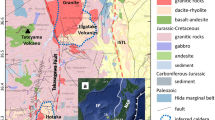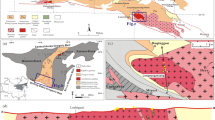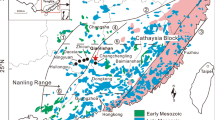Abstract
FOR a century and a half the origin of granite (including granodiorite) has remained one of the most intractable and controversial of the problems geologists have tried to solve. Fouqué and Levy's comment in 1882, that "it excites the most lively discussion", is as true to-day as ever before; and indeed might be regarded in some countries as a mild understatement of the passions that are aroused by apparent conflicts of evidence and very real conflicts of opinion. Hutton clearly established the status of granite as a crystalline plutonic rock, but the French geologists and Lyell and his followers soon realized that not all granites are necessarily of igneous origin. Some occurrences were seen to have no sharp contact against the aureole of metamorphic rocks, but to merge into the surrounding schists through a transitional zone of gneisses and felspathized schists so gradually that at no point could it be said that the rock ceased to be metamorphic and became igneous. These granites consequently came to be regarded, not as representing the cause of metamorphism, but as being the extreme products of its action.
This is a preview of subscription content, access via your institution
Access options
Subscribe to this journal
Receive 51 print issues and online access
$199.00 per year
only $3.90 per issue
Buy this article
- Purchase on Springer Link
- Instant access to full article PDF
Prices may be subject to local taxes which are calculated during checkout
Similar content being viewed by others
References
Iddings, J. P., Bull. Phil. Soc. Washington, 12, 91 (1892).
Read, H. H., "Meditations on Granite: Part I", Proc. Geol. Assoc., 54, 64(1943); Part II, ibid., 55, 45 (1944).
Green, A. H., Geol. Mag., 8 428, 553 (1871).
Callaway, C., Quart. J. Geol. Soc., 41, 221 (1885).
Rosenbusch, H., Abh. Geol Spezialkarte Elsass-Lothr., 1, 80 (1877).
Cole, G. A. J., Quart. J. Geol. Soc., 71, 184 (1915).
Reynolds, D. L., Proc. Roy. Irish Acad., 48 B, 231 (1943); Quart. J. Geol. Soc., 99, 205 (1943).
Reynolds, D. L., Quart. J. Geol. Soc., 97, 1 (1941). Walker, F., and Poldervaart, A., Trans. Roy. Soc. S. Africa., 29, 285 (1942).
Holmes, A., "Principles of Physical Geology", 480–483 (Edinburgh. 1944). References already given by Bead (see ref. 2) have not been repeated; the above are additional.
Rights and permissions
About this article
Cite this article
HOLMES, A. Natural History of Granite. Nature 155, 412–415 (1945). https://doi.org/10.1038/155412a0
Issue Date:
DOI: https://doi.org/10.1038/155412a0
This article is cited by
-
50 Jahre Granitforschung
Geologische Rundschau (1987)
-
Acid Front in Granitization
Nature (1951)
Comments
By submitting a comment you agree to abide by our Terms and Community Guidelines. If you find something abusive or that does not comply with our terms or guidelines please flag it as inappropriate.



